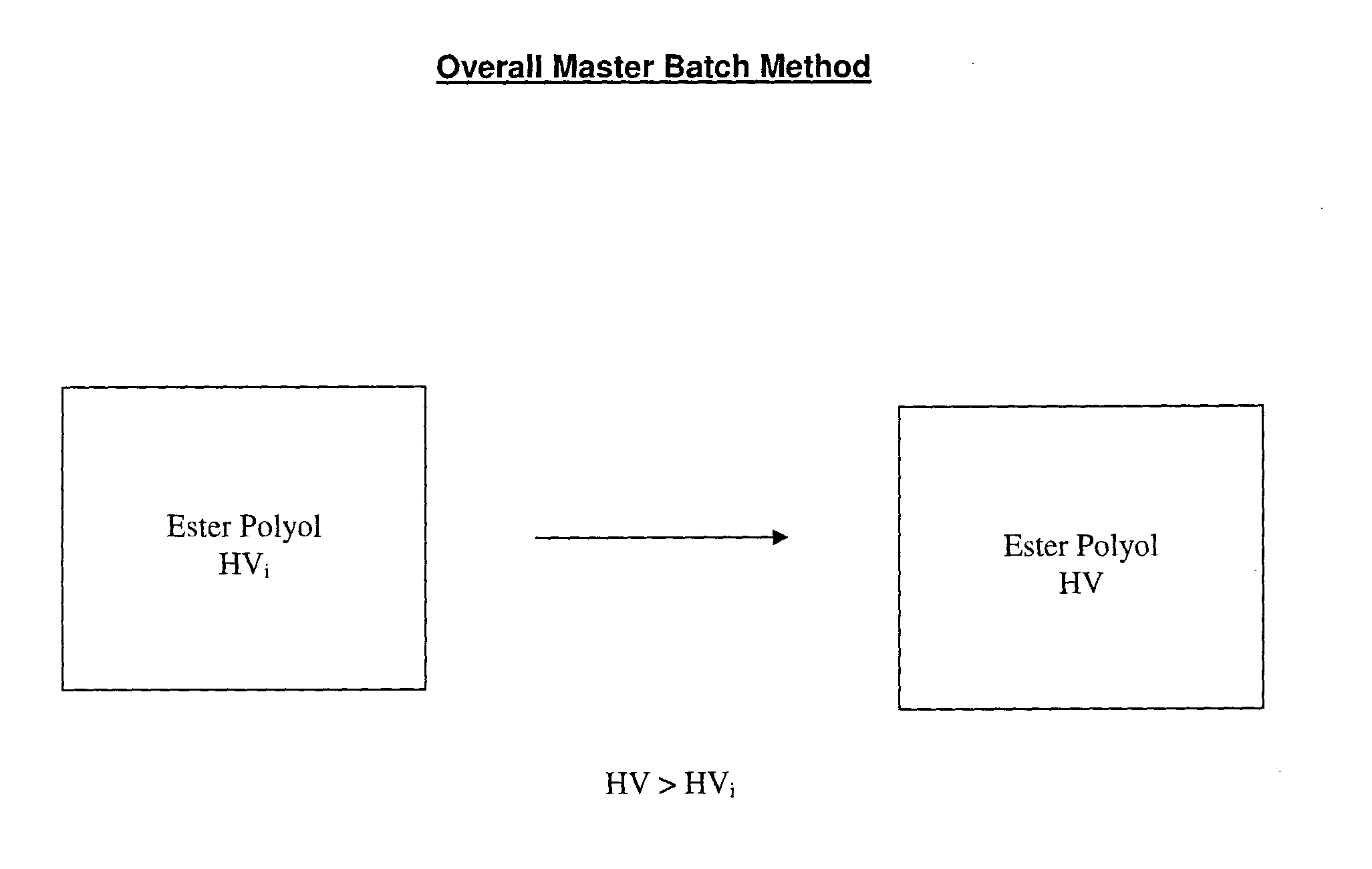Bio-polyols for bio-lubricant and bio-polymer and methods for the preparation thereof
a bio-lubricant and bio-polymer technology, applied in the field of methods for the preparation of polyols, can solve the problems of difficult processing of two or more phases into useful products, relatively high crystallization temperature,
- Summary
- Abstract
- Description
- Claims
- Application Information
AI Technical Summary
Benefits of technology
Problems solved by technology
Method used
Image
Examples
Embodiment Construction
[0066]The present inventors have addressed the problems in the art and have developed the master batch method, an improved method for preparing ester polyols suitable for a range of applications.
[0067]Accordingly, in one aspect the present invention is provided a method for preparing ester polyols comprising transesterifying a first ester polyol with a primary polyol to produce a second ester polyol, the second ester polyol having a hydroxyl value (HV) which is greater than a hydroxyl value (HVi) of the first ester polyol.
[0068]In one particular aspect of the invention, the first ester polyol may be prepared by the sequential steps of:[0069]reacting a fatty acid distillate with ozone in the presence of a reactant and a catalyst to produce a reaction mixture, wherein the ozone may comprise at least two moles of ozone per carbon-to-carbon double bond of the fatty acid distillate; and[0070]refluxing the reaction mixture to produce the first ester polyol having a hydroxyl value (HVi). T...
PUM
| Property | Measurement | Unit |
|---|---|---|
| water content | aaaaa | aaaaa |
| water content | aaaaa | aaaaa |
| water content | aaaaa | aaaaa |
Abstract
Description
Claims
Application Information
 Login to View More
Login to View More - R&D
- Intellectual Property
- Life Sciences
- Materials
- Tech Scout
- Unparalleled Data Quality
- Higher Quality Content
- 60% Fewer Hallucinations
Browse by: Latest US Patents, China's latest patents, Technical Efficacy Thesaurus, Application Domain, Technology Topic, Popular Technical Reports.
© 2025 PatSnap. All rights reserved.Legal|Privacy policy|Modern Slavery Act Transparency Statement|Sitemap|About US| Contact US: help@patsnap.com



